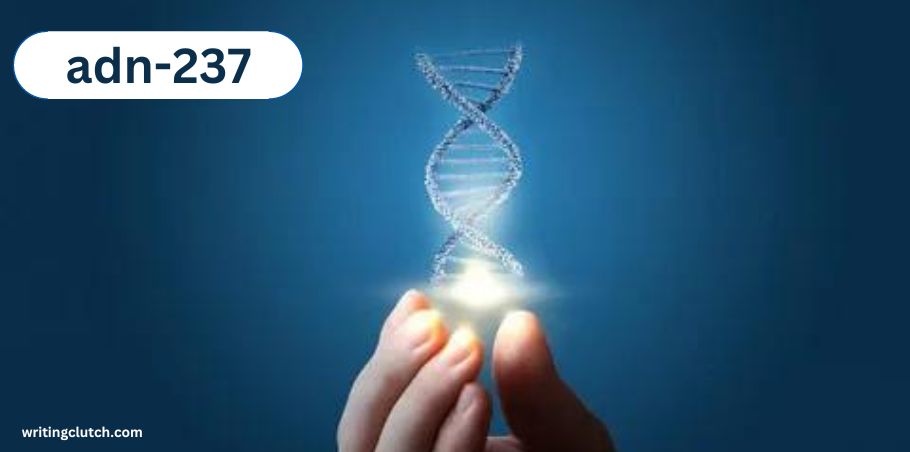adn-237 is an exciting and emerging compound in the scientific world, and whether you’re a researcher or just curious about new developments, there’s much to uncover. This comprehensive guide will take you through everything you need to know about from its chemical structure to its medical uses and future potential.
What is ADN-237?
It is a unique compound that has captured the attention of scientists worldwide due to its potential applications in medicine and biotechnology. At its core, adn-237 is a synthetic molecule that interacts with biological systems in ways that can lead to advancements in disease treatment and drug development.
The Development and Discovery
The discovery of adn-237 traces back to several years of dedicated research in molecular biology. Initially designed as a part of pharmaceutical research, adn-237 has evolved through numerous experimental trials. Researchers have focused on its potential to interact with various biological pathways, making it a promising candidate for future medical therapies.
Why is ADN-237 Important?
In today’s rapidly evolving scientific landscape, compounds like adn-237 are pivotal. It stands out because of its versatile properties, enabling researchers to explore new treatment options for a variety of diseases. Its adaptability in research and medicine is why it holds such importance in modern science.
Real-World Applications
Although much of potential is still under investigation, its real-world applications are gradually coming to light. From its use in cancer research to its potential as a component in innovative drug formulations, adn-237 offers a vast range of possibilities. These developments could transform treatment protocols and open new doors in therapeutic methods.
The Chemical Structure of ADN-237
On a molecular level is comprised of a combination of carbon, hydrogen, and nitrogen atoms, arranged in a specific structure that enables its interaction with biological compounds. The unique bonding of these atoms is what gives adn-237 its remarkable properties in the field of chemical research.
Interaction with Other Compounds
The ability to bond with other molecules makes it highly adaptable in various chemical processes. This characteristic has made it a valuable tool in laboratories, where it is often used to study how new drugs might interact with biological systems.
ADN-237 in Medicine
It is being studied for its potential role in treating several diseases. It has shown promising results in preclinical trials, particularly in the areas of oncology and neurology. Researchers are optimistic that this compound could become a key component in future treatments for conditions like cancer, Alzheimer’s disease, and even certain genetic disorders.
Potential for Disease Treatment
One of the most exciting prospects of lies in its potential to revolutionize disease treatment. Its ability to target specific biological pathways means that it could be tailored to treat a wide variety of conditions, potentially offering more effective and less invasive treatment options.
How ADN-237 Works: Mechanism of Action
The way interacts with biological systems is a major focus of ongoing research. It binds to specific receptors in the body, which can trigger or inhibit certain biological responses. This ability to modify biological activity is what makes such a valuable tool in the development of new therapies.
Biological Pathways Involved
It is primarily works by interacting with cellular receptors that regulate critical biological pathways. These pathways can influence cell growth, immune response, and even the repair of damaged tissues. By targeting these pathways, it has the potential to be used in therapies that require precise control over these biological processes.
ADN-237 and Biotechnology
The biotechnology sector is already benefiting from the use of adn-237. Its unique properties are being explored in drug development, particularly in creating medications that can better interact with the body’s natural systems. This could lead to more effective treatments with fewer side effects, making it a valuable tool in pharmaceutical research.
Future of in Biotechnology
As the field of biotechnology advances, the role is expected to expand. With continuous research, it could become a staple in creating new biotechnological solutions, not just in medicine but also in fields like agriculture and environmental science.
Side Effects and Risks
As with any new compound, it is not without its risks. Although it is still under study, some early trials have reported minor side effects, such as mild headaches or nausea. These side effects are typically short-lived, but more research is needed to fully understand the safety profile of ADN-237.
Mitigating the Risks Associated
To reduce the risks of ADN-237, researchers are working to better understand how it interacts with the body. This includes identifying the safest dosages and determining which populations might be most at risk for adverse reactions. Through careful study, the goal is to make ADN-237 as safe as possible for widespread use.
Ethical Considerations of ADN-237
As ADN-237 continues to be studied, ethical concerns have emerged regarding its use in research. Scientists must ensure that their experiments involving are conducted responsibly and with the highest standards of safety and efficacy in mind. There are always concerns when introducing a new compound into the medical or biotechnological fields, and is no exception. Researchers are keeping a close eye on safety and efficacy standards to ensure that any applications of both ethical and beneficial.
The Future of ADN-237
As continues to evolve in the scientific community, new trends are emerging. Researchers are looking into how the compound can be used in combination with other therapies to enhance effectiveness. Innovations in delivery methods are also being explored to improve how is administered to patients.
The potential applications of extend beyond medicine. Scientists are investigating its use in agriculture to promote healthier crops and in environmental science to develop solutions for pollution control. The future of ADN-237 is bright, with endless possibilities for its application.
FAQs About adn-237
What exactly is ADN-237 used for?
It is primarily being studied for its potential in medicine and biotechnology, particularly in drug development and disease treatment.
Are there any known side effects of ADN-237?
Some early studies have reported minor side effects, such as headaches and nausea, but more research is needed to fully understand its safety profile.
Can ADN-237 be used in biotechnology?
Yes, is showing great promise in biotechnology, particularly in the development of new, more effective drugs.
How long has ADN-237 been studied?
It has been under study for several years, with researchers continuously exploring its potential applications.
What are the ethical concerns surrounding ADN-237?
The main ethical concerns involve ensuring the responsible use in research and carefully monitoring its safety and efficacy before widespread use.
Conclusion
adn-237 is an exciting and versatile compound that holds tremendous promise for the future of medicine and biotechnology. From its ability to target specific biological pathways to its potential in drug development, it is paving the way for innovations that could change how we approach disease treatment and scientific research. With more research and responsible use, it could soon become a cornerstone in multiple scientific fields.





